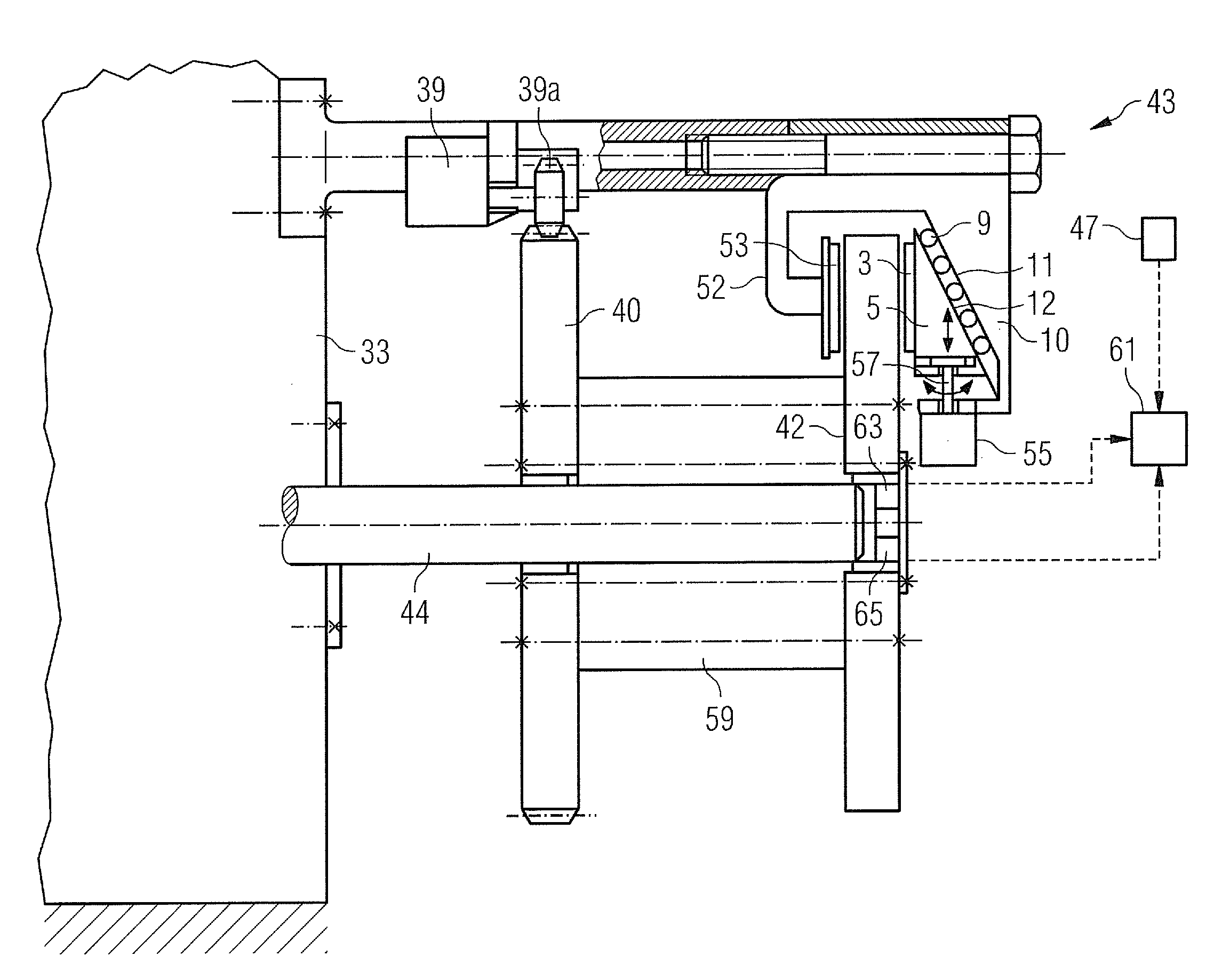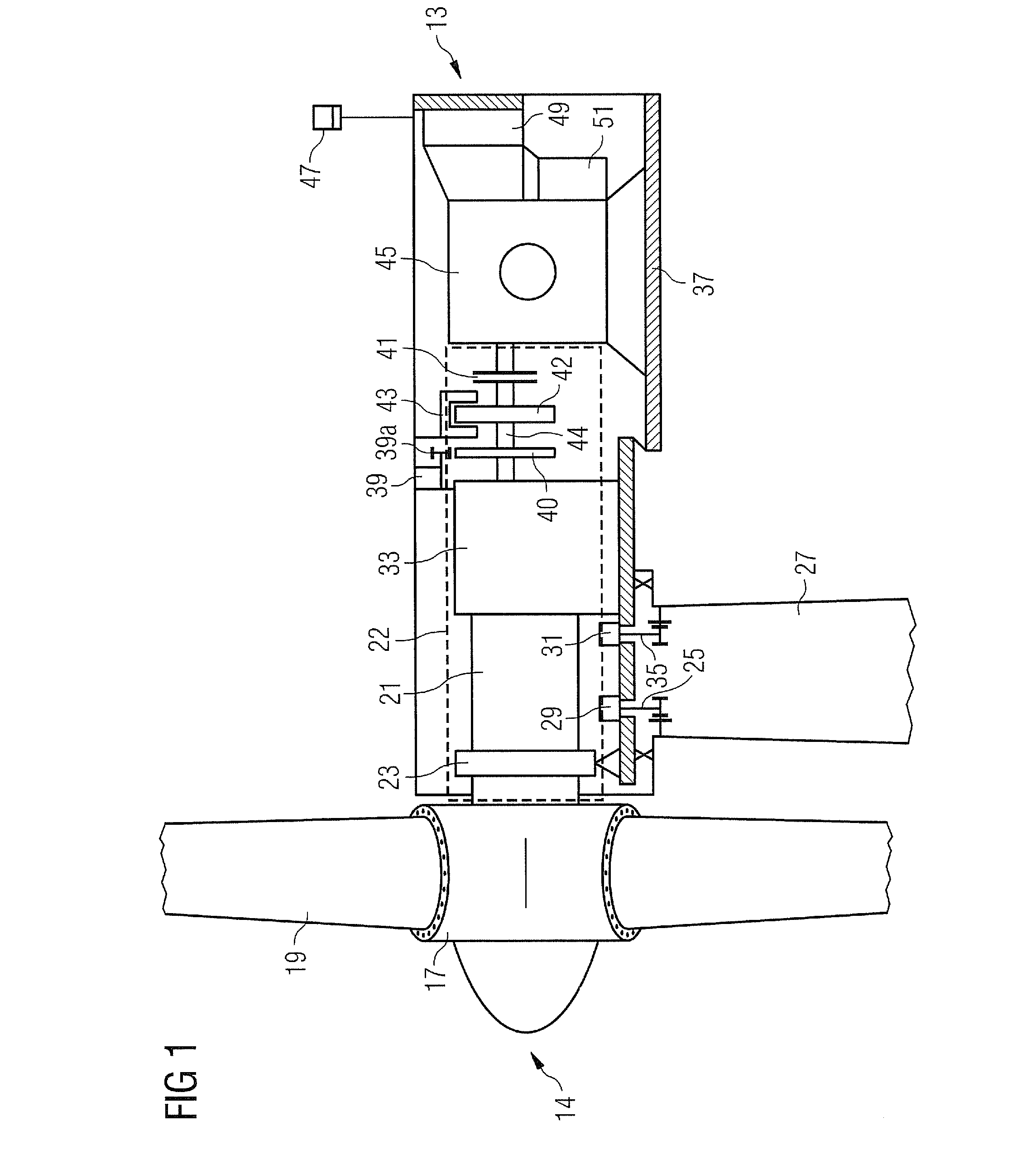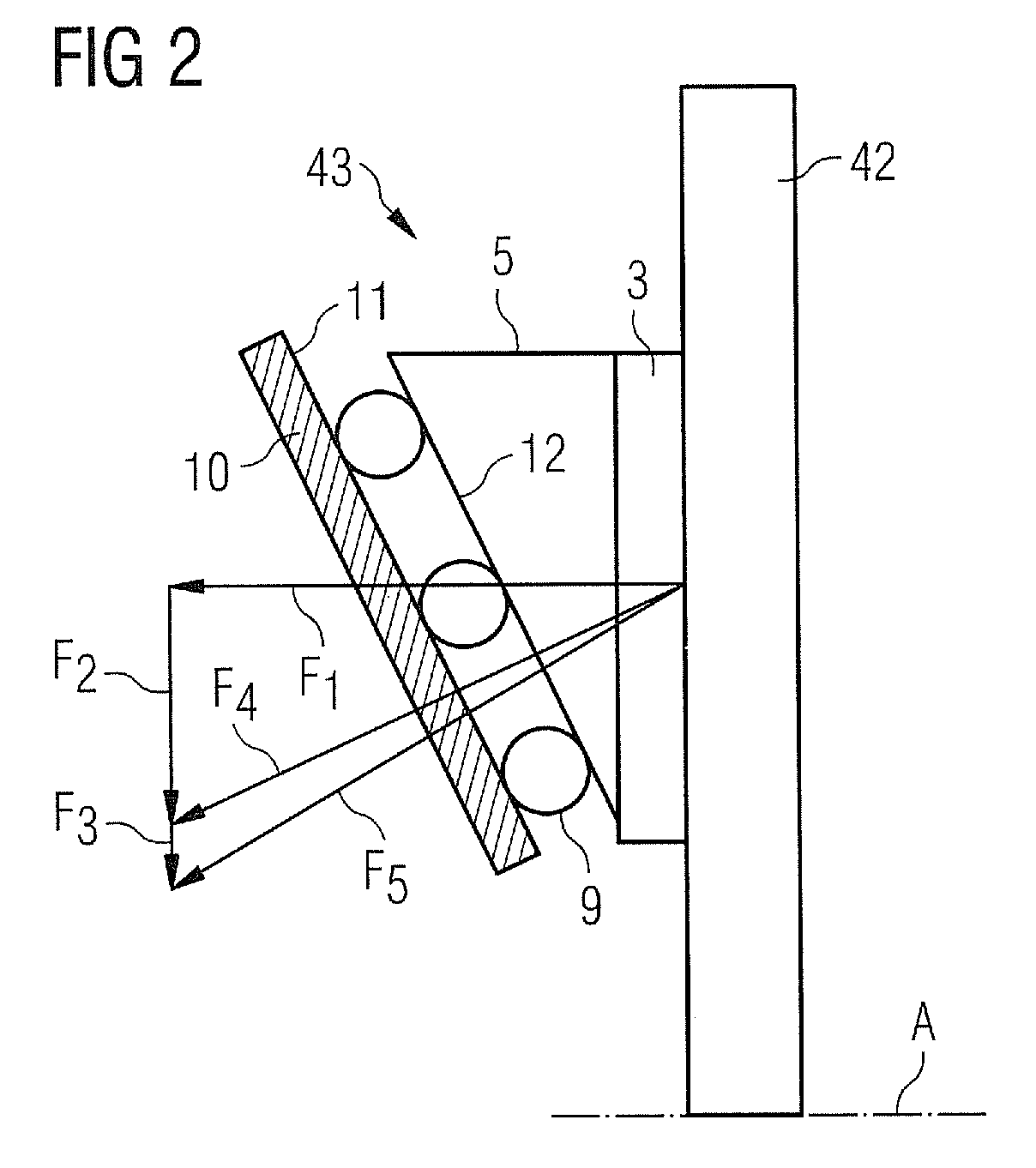Wind turbine braking device and method of use damping drivetrain oscillation
a technology of wind turbines and damping devices, which is applied in the direction of rotors, electric generator control, vessel construction, etc., can solve the problems of automatic vibration (i.e. torsional oscillation), affecting the efficiency of wind turbine braking, etc., to achieve the effect of increasing damping efficiency and greater effect accuracy
- Summary
- Abstract
- Description
- Claims
- Application Information
AI Technical Summary
Benefits of technology
Problems solved by technology
Method used
Image
Examples
Embodiment Construction
[0070]FIG. 1 shows a wind turbine 13 according to an embodiment of the invention. On its front side, which faces the wind, it features a rotor 14 comprising a plurality of rotor blades 19. These are connected to a hub 17. A first shaft 21 leads from the hub 17 into the interior of the cabin 37 of the wind turbine 13. Said first shaft is mounted in the cabin 37 via an elastic main mounting 23 and a first yoke 25 and a second yoke 35 (whose positions can be adjusted by means of motors 29, 31).
[0071]A gear 33 converts the rotation of the first shaft 21 into a rotation of a second shaft 44, wherein the second shaft 44 is arranged on that side of the gear 33 which faces away from the second shaft 21. The second shaft 44 leads to a generator 45, in which current is obtained from the rotational energy of the second shaft 44. A coupling 41 is used to couple the second shaft 44 in or out, in order that in hazardous situations the generator 45 can be decoupled from the rotation of the second ...
PUM
 Login to View More
Login to View More Abstract
Description
Claims
Application Information
 Login to View More
Login to View More - R&D
- Intellectual Property
- Life Sciences
- Materials
- Tech Scout
- Unparalleled Data Quality
- Higher Quality Content
- 60% Fewer Hallucinations
Browse by: Latest US Patents, China's latest patents, Technical Efficacy Thesaurus, Application Domain, Technology Topic, Popular Technical Reports.
© 2025 PatSnap. All rights reserved.Legal|Privacy policy|Modern Slavery Act Transparency Statement|Sitemap|About US| Contact US: help@patsnap.com



